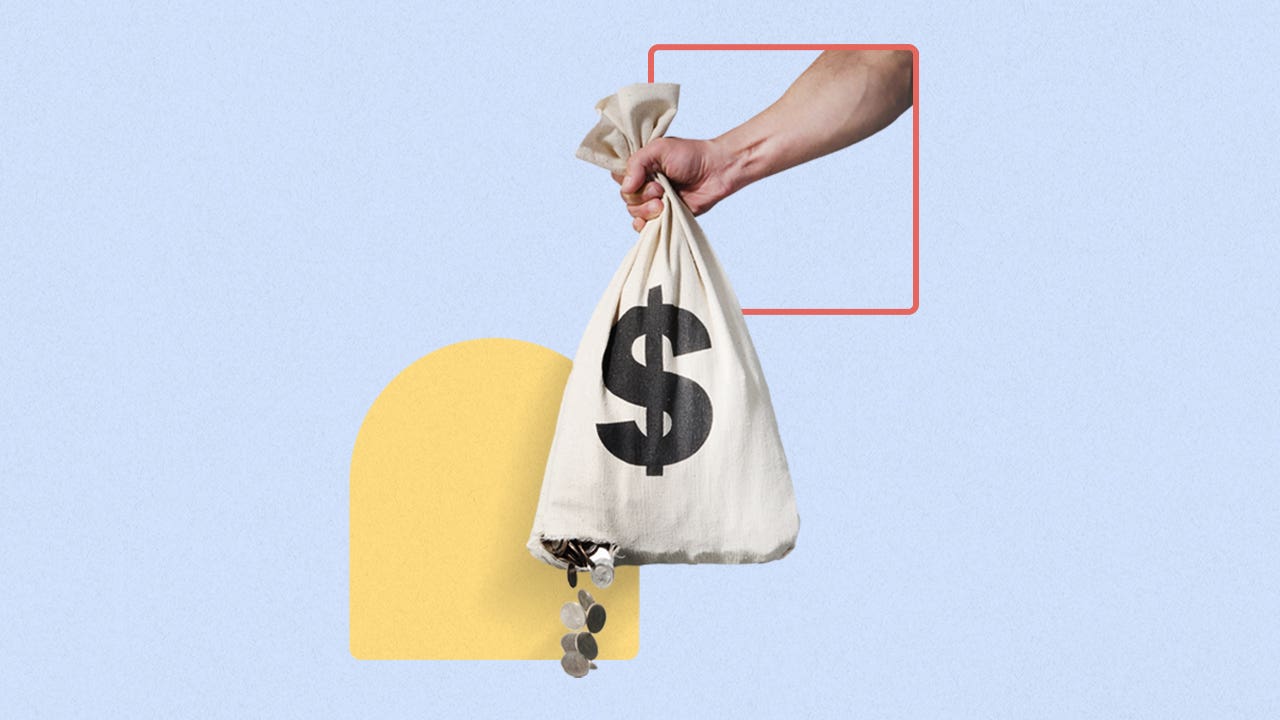Can you get a small business loan after bankruptcy?

The Bankrate promise
At Bankrate we strive to help you make smarter financial decisions. While we adhere to strict , this post may contain references to products from our partners. Here's an explanation for .
Key takeaways
- Chapter 7, Chapter 11 and Chapter 13 are the three most common types of business bankruptcies
- Consequences of filing business bankruptcy include damaged credit and loss of assets
- Minimizing debt, writing a detailed business plan and applying with a cosigner can improve the odds of loan approval after bankruptcy
Bankruptcy isn’t something anyone wants to deal with, but sometimes, you find yourself in financial trouble that you can’t handle. Bankruptcy helps you clean the slate, but that doesn’t mean it’s clear sailing from then on.
Getting a small business loan after going through bankruptcy is possible, but it can be a challenge. For most lenders, you’ll likely have to wait anywhere from three to seven years after declaring bankruptcy before you can successfully apply for a loan.
What is bankruptcy?
Bankruptcy is a legal process through which you can get relief from your creditors. If you can’t afford to pay your bills and other solutions like business debt consolidation have failed, bankruptcy lets you either restructure or eliminate some of your debt.
Since bankruptcy only happens when you can’t afford to pay your debts, it has a big impact on your credit. Your score will drop significantly, and the bankruptcy will remain on your report for seven to 10 years afterward.
Types of business bankruptcy
Here is a look at the three most common types of bankruptcy business owners file in federal court. Each is named after a section of the U.S. Bankruptcy Code.
| Chapter 7 Bankruptcy | Chapter 11 Bankruptcy | Chapter 13 Bankruptcy | |
|---|---|---|---|
| Availability | Open to corporations, small businesses or individuals | Open to corporations, small businesses or individuals | Open to individuals, including sole proprietors |
| Stays on credit report | Up to 10 years | Up to 10 years | Up to 7 years |
| Means test | Yes | No | No. May qualify if you fail Chapter 7 means test |
| Debt limit | None | Small business: $3,024,725Subchapter V: $7,500,000 | Total: $2,750,000 |
| Liquidate or reorganize | Must liquidate or sell nonexempt assets | Reorganize. Requires a repayment plan | Reorganize. Requires a repayment plan |
| Timeline | Can take 4 to 6 months | Can last up to 5 years or longer | Must repay debts in 3 or 5 years |
Chapter 7 bankruptcy
Chapter 7 bankruptcy is also known as liquidation bankruptcy and is the fastest and most common type of bankruptcy. When you go through Chapter 7 bankruptcy, the trustee working on your case will sell all your assets to pay your company’s debts. Because these assets are usually key to running your business, companies going through Chapter 7 usually go out of business afterward.
To be eligible for Chapter 7 bankruptcy, your company must meet a means test, which measures your income and expenses to see if you are truly unable to repay your creditors.
Chapter 11 bankruptcy
One of the two types of reorganization bankruptcies, Chapter 11 bankruptcy gives your company a chance to keep operating. Instead of liquidating your assets, the trustee will help you negotiate with your creditors to devise a payment plan.
The plan may involve paying just a portion or all of what you owe over the course of several years. This can help you lower monthly payments to make them affordable or get out of debt at a lower cost.
Chapter 13 bankruptcy
Chapter 13 bankruptcy is very similar to Chapter 11. The primary difference is that it’s only available to individuals. This can include self-employed individuals like independent contractors or sole proprietors. There is also a smaller debt limit to qualify for Chapter 13 bankruptcy.
Consequences of business bankruptcy
Going through a business bankruptcy is a big deal, and there are serious consequences that you need to consider before filing.
- Damaged credit. Your credit score will drop in the wake of bankruptcy, often making it hard to get loans in the future. Bankruptcy can stay on your report for up to 10 years.
- Loss of assets. Depending on the type of bankruptcy, the process may involve selling off some or all of your company’s assets, making it difficult to keep running.
- Some debts will remain. Bankruptcy doesn’t automatically eliminate all of your debts. You’ll still owe money, and some priority debts must be repaid, including tax debts.
- Cost. Between miscellaneous fees and attorney costs, bankruptcy can cost anywhere from $900 to $6,000 or more.
How to get a business loan after bankruptcy
If you’ve declared bankruptcy, getting a loan for your business will be difficult. Here are some tips to follow that may give you the best chance of qualifying.
Wait
When you go through bankruptcy, it will tank your credit score and stay on your credit report for years. Lenders will see you as a risky creditor, making it harder for you to access credit while the bankruptcy remains on your credit report. Most lenders won’t even consider approving a business that has gone bankrupt in the past three to seven years.
Waiting gives you time to take the necessary steps to show lenders that you are able to successfully manage a loan down the road.
Keep debt to a minimum
One factor contributing to going through bankruptcy is taking on too much business debt. Lenders will be very wary of a company with a lot of debt, especially if it went through bankruptcy recently. They could perceive it as the start of a repeating cycle. Plus, your personal and business credit score will lower the more debt you have.
Try to avoid debt as much as possible, and when you are eligible for a loan, offer collateral to secure the loan if you can. That will help you have the best chance of getting a loan at the best rate.
Write a business plan
Putting together a business plan to present to lenders can help if you’re on the cusp of being able to qualify for a loan after bankruptcy.
Your business plan should be as clear and refined as possible. You want to show lenders that you know what you’re doing and that you have a clear plan for what your company is doing and how it will make money. Drawing a straight line from getting the loan to deploying those funds and using that capital to produce the revenue you’ll use to pay off the debt can also be helpful.
Be realistic. Don’t go in with wild overestimates of your revenues and underestimates of costs. Also, don’t be afraid to note risks and problems your company could face and be ready to explain how you’ll overcome them.
Also, acknowledge the bankruptcy on your record and write a bankruptcy statement. Describe what led to your bankruptcy and the steps you’ve taken to ensure it won’t happen again.
Find a cosigner
A cosigner is a third party that agrees to take responsibility for your debt if you default on the loan. It reduces the lender’s risk, making them more likely to approve your application.
On top of finding a cosigner, most lenders will also demand a personal guarantee from the company’s owners, making you personally liable for paying off the debt.
Of course, the drawback is that you need to find someone willing to put their money on the line for your benefit. That person also needs to have strong credit to help support their claims that they’ll take over payments if necessary.
Bottom line
Going through bankruptcy makes it very difficult to get loans in the future. Odds are good that it will take years to find a willing lender, and even then, you’ll face very high rates and loan fees.
Take steps to rebuild your credit after bankruptcy, and be patient. It may take time, but you’ll eventually be able to qualify for business loans again.
Frequently asked questions
-
Each lender sets its own rules. Most lenders won’t lend to a company that went through bankruptcy in the past three to seven years. Some specialized bad credit lenders and other companies may have shorter time requirements.
-
Yes, it’s possible to get an SBA loan after bankruptcy, but it may be difficult to meet the credit score and other requirements that lenders set.
-
Yes, if you have an SBA loan and go through bankruptcy, it is possible to get the loan discharged. But the lender is still entitled to the asset or assets you offered up as collateral for the loan.
Related Articles



